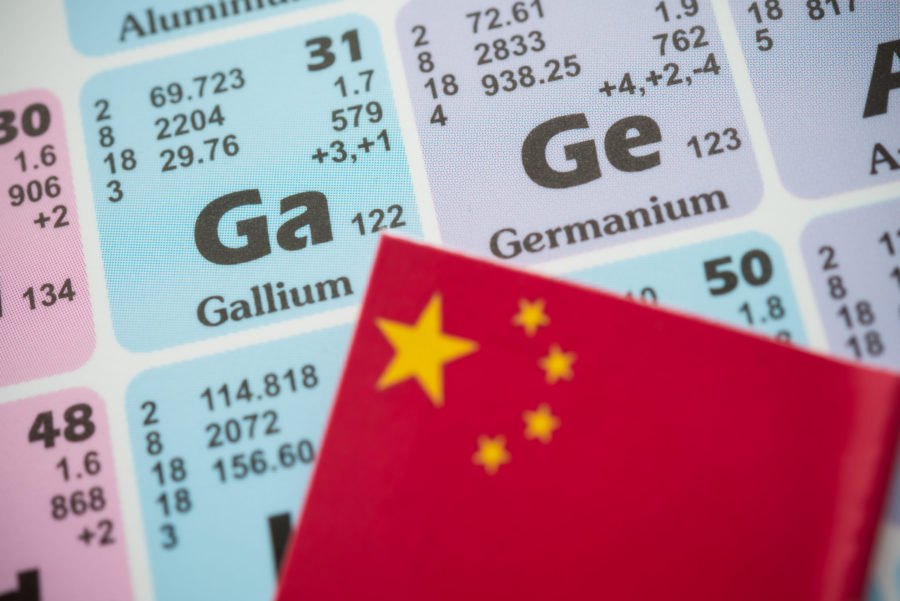Why are gold, silver mining share prices not moving higher?
Who Buys Gold?
U.S. Demand
It’s so easy to become short-sighted in the different facets of the gold market. In the U.S., it’s easy to believe that gold price rises seen since 2005 are due to either the economic outlook of the U.S. or the strength and weakness of the USD. There’s no doubt that in the short-term, gold price movements are driven by traders focused on the exchange rate between the dollar and the euro. But what gold are they buying?
The sophisticated trading operations and tools available in the developed world are able to discount such price moves quickly and dramatically, seemingly providing such gold and silver price dominance. Looked at on a day-to-day basis, the evidence of such dominance is overwhelming. The volumes of gold bought and sold daily are enormous. But are they buying the sort of gold that moves the gold price?
- Traders on COMEX buy and sell derivatives in the form of Options and Futures contracts. This is not physical gold. Indeed COMEX officials informed us that only 5% of the volumes traded involve an actual transfer of physical gold.
- While the SPDR gold Exchange Traded Fund holds in HSBC vaults more than 1,500 tonnes, only a few tonnes, on average, move each week, reducing the price impact of these investors considerably.
- Institutions that do buy gold, allocate an amount to be invested in the gold sector. This amount has as its underlying motive to create profits from these investments. Under the usual risk-reward concept, with the objective of maximum total return, institutions will spread this allocation to the different aspects of the gold market. At times they may feel that the bullion price will produce the most short-term profits, so invest directly in physical gold, perhaps counter-balancing these positions with futures and options which adding a portion of trading to the portfolio. Long-term positions may well be taken in gold mining company shares, provided the higher returns justify the higher risk – this includes the corporate risk and risk of higher costs of production cutting back potential profits. But it’s normal to spread the risk of gold shares with a physical gold position. The net result is that institutions may well hold only a 30 to 50% position in physical gold [of the amount allocated to gold investments], with the intention of holding these for the long-term. The result is that when one adds the buying and selling of all the gold instruments together over time and weighs them against the volume of physical gold buying and selling over time, the weight of short-term trading in its various forms, heavily outweighs that of physical gold buying, perhaps 10 to 1. Surprisingly this makes U.S. physical gold activity a tiny proportion of total gold-related investment and trading activity. After all, to the U.S. investor making a dollar profit from their gold dealings and not holding it for the long term, is the thrust of their activity. Gold bullion holding for the long-term is not their primary interest.
- Overall, the U.S. accounts for +7% of world gold physical demand only, primarily for the jewelry sector. If it was not for the sophistication of its markets and measured on physical demand alone, the U.S. demand is insufficient to dominate the gold price. But the sheer volume of activity in the short-term does dominate the short-term price, but not the long-term price.
Of this total demand for gold in its various forms, what portion goes into gold mining shares? It is very small.
After the arrival of gold Exchange Traded Funds in the market even this amount was reduced considerably because, for the first time institutions could take positions that would affect the gold price itself as the buying of gold ETF shares caused a purchase of physical gold to happen. Gold share buying had zero affect on the gold price itself.
So the amount usually spent on gold shares dropped dramatically!
Emerging World Demand
Between 65% and 75% of the world’s demand for physical gold comes from the emerging world. One hundred per cent of this is for long-term financial security. Even recycled gold is sold with the intention of rebuying again either when the price is lower or when investors are able to afford to buy again. This applies both in China and in India. The investment attitude behind such buying is for the purpose of financial security.
It is both rare and insignificant for investors in the emerging world to buy gold mining shares or Futures & Options or the shares of gold Exchange Traded Funds. The emerging world sees these as speculative instruments related to gold and not gold itself. They are not interested in investing outside their world, usually.
The profit motive is virtually absent from these investors’ minds. But when the money volumes spent by these investors is set against the money volumes of the developed world investors in gold instruments, it is tiny because they buy usually once for the long-term and rarely sell. But their demand is insistent and persistent over time. This is why their impact on the long-term gold price is so significant.
However, as to the shares of gold mining companies, the bulk of investors in the emerging world have little, to zero, money invested in them.
Central Bank Demand
The pattern of behavior of central banks is similar to that of the emerging world. They buy only gold bullion for the long-term and are not particularly interested in the price of gold itself only the number of ounces they hold. They have zero interest in buying the shares of gold mining companies.
Silver Prices and silver mining company shares
We’ve followed the silver price for some considerable time and seen that the silver price moves with the gold price, more on the rise and more on the fall, but they move together because they’re treated as a long-term investment that counters the falling value of currencies as a whole. We have no reason to see why this well established pattern change. Therefore it’s reasonable that we should talk about gold and silver shares together, in the context of this article.
Who Buys Gold and Silver Shares?
Apart from a small number of cosmopolitan investors in the emerging world, only investors in the sophisticated markets of the developed world invest in the shares of gold and silver mining companies. It’s quite sobering to realize this.
In the emerging world, the reasons for buying relate as much to ownership of those companies as to sound long-term investments. It is not part of their investment culture to try to profit from the gearing gold and silver mining company shares can offer.
The culture of short-term trading in the emerging world is related more to gambling than to wise investment trading and has not taken hold to nearly the same extent as it has in the developed world.
Institutional investors and the wealthy retail investor are among the buyers of gold and silver mining company shares. The criteria they use is only partially related to the price of gold and silver. The prime reason for them buying gold & silver mining shares now is that these will produce a greater total return than the gold and silver prices themselves. Why else would they take on the added risk that comes with these corporate investments?
Equities Have Added Risks & Costs
It is easy to assume that gold and silver mining shares will move with the gold and silver prices, but they haven’t. They have underperformed precious metal prices by a wide margin over the last few years.
We will go into more detail on why this is so in the next article we produce on the subject, but suffice it to say now that mining company shares come with a lot more baggage than just prices that dominate the performance of the companies.
Members Only:
Who Buys Gold & Silver Shares?
Equities Have Added Risks and Costs
Get the rest of the article & more!
Subscribe @
Legal Notice / Disclaimer
This document is not and should not be construed as an offer to sell or the solicitation of an offer to purchase or subscribe for any investment. Gold Forecaster – Global Watch / Julian D. W. Phillips / Peter Spina, have based this document on information obtained from sources it believes to be reliable but which it has not independently verified; Gold Forecaster – Global Watch / Julian D. W. Phillips / Peter Spina make no guarantee, representation or warranty and accepts no responsibility or liability as to its accuracy or completeness. Expressions of opinion are those of Gold Forecaster – Global Watch / Julian D. W. Phillips / Peter Spina only and are subject to change without notice. Gold Forecaster – Global Watch / Julian D. W. Phillips / Peter Spina assume no warranty, liability or guarantee for the current relevance, correctness or completeness of any information provided within this Report and will not be held liable for the consequence of reliance upon any opinion or statement contained herein or any omission. Furthermore, we assume no liability for any direct or indirect loss or damage or, in particular, for lost profit, which you may incur as a result of the use and existence of the information, provided within this Report.
More News
Is Basel III setting up a new gold-backed monetary system?
April 20, 2025 | 08:22 am
China’s export controls are curbing critical mineral shipments to the world
April 20, 2025 | 08:15 am
{{ commodity.name }}
{{ post.title }}
{{ post.date }}




Comments